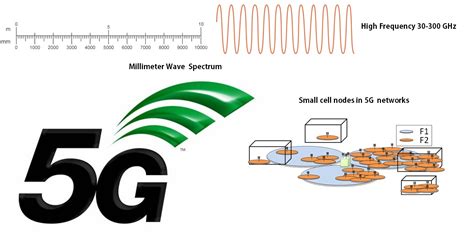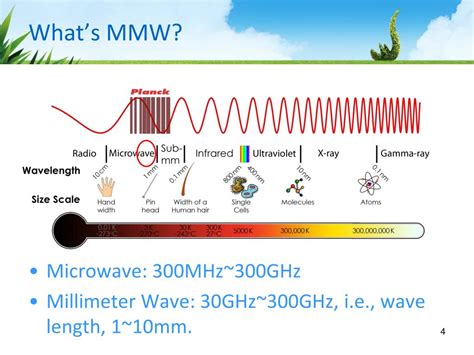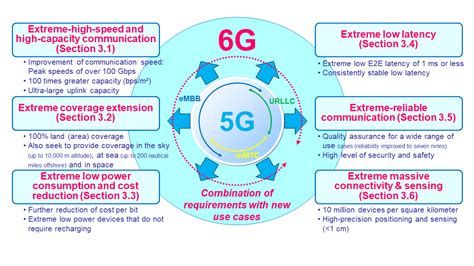Breaking News


Popular News


Learn about millimeter waves, 6G technology, challenges, and societal impact. Discover the integration and advancements in 6G connectivity. Stay ahead in the digital age.The Role of Millimeter Waves in 6G Connectivity
As we continue to witness the rapid evolution of technology, the world is already buzzing with anticipation for the next generation of wireless connectivity – 6G. With promises of even faster speeds and lower latency than 5G, 6G is expected to revolutionize the way we connect and interact with the digital world. At the heart of 6G technology lies millimeter waves, a high-frequency band of the electromagnetic spectrum that has the potential to enable the blazing speeds and massive capacity that 6G promises to deliver. In this blog post, we will dive into the role of millimeter waves in 6G connectivity, from understanding what they are and how they work, to the advancements in 6G technology that are making it all possible. We will also explore the integration of millimeter waves in 6G, the challenges that come with this new level of connectivity, and the potential impact that 6G could have on society as we know it. Join us as we unravel the future of wireless connectivity and the role that millimeter waves will play in shaping it.
Contents

Millimeter waves are a type of electromagnetic wave with wavelengths ranging from 1 millimeter to 10 millimeters, falling between microwave and infrared waves on the electromagnetic spectrum. These waves have gained significant attention in the field of telecommunications due to their potential for high-speed data transmission and connectivity. As technology continues to advance, there is a growing emphasis on harnessing the capabilities of millimeter waves for the next generation of wireless communication, known as 6G.
The unique properties of millimeter waves make them a promising candidate for 6G connectivity. With a higher frequency than traditional radio waves, millimeter waves have the potential to carry large amounts of data at incredibly fast speeds, making them suitable for supporting the vast network of connected devices that will characterize the 6G era. Additionally, millimeter waves have a shorter range compared to lower frequency waves, allowing for more focused and localized transmission, which can be beneficial in densely populated urban areas.
Despite these advantages, the use of millimeter waves in 6G connectivity also presents some challenges. One of the main obstacles is the ability of these waves to penetrate obstacles such as buildings and foliage, which may limit their effectiveness in certain environments. Additionally, the deployment of millimeter wave infrastructure requires careful planning and investment in order to ensure seamless coverage and connectivity.

The world of technology is constantly evolving, and the next big leap is the advancement towards 6G technology. With 5G networks already revolutionizing the way we communicate and consume data, the industry is now looking at what lies ahead with 6G. The advancements in 6G technology are set to bring about a whole new era of connectivity and innovation.
One of the key components of 6G technology is the integration of millimeter waves. Millimeter waves are a type of electromagnetic wave that have a frequency range between 30 GHz and 300 GHz. These waves have the potential to significantly increase the data rates and capacity of wireless networks, paving the way for faster and more efficient communication.
Another significant advancement in 6G technology is the potential for network densification. This concept involves increasing the number of small cells in a network, leading to a more robust and reliable connection. This is crucial for accommodating the massive increase in connected devices and the ever-growing demand for high-speed, low-latency communication.

Millimeter waves are a crucial aspect of the 6G technology revolution, as they provide the foundation for high-speed, reliable connectivity. The integration of millimeter waves in 6G networks enables faster data transmission and lower latency, supporting the development of innovative applications and services.
One of the key advancements in 6G technology is the use of millimeter waves to achieve unprecedented data rates and capacity. This integration allows for the seamless transfer of massive amounts of data, paving the way for new capabilities in areas such as augmented reality, virtual reality, and autonomous vehicles.
The utilization of millimeter waves in 6G connectivity also presents unique challenges, such as the need for advanced antenna design and infrastructure deployment. However, the potential impact of 6G on society, including enhanced communication, increased productivity, and improved quality of life, makes the integration of millimeter waves a critical component of the next generation of wireless technology.
 The Role of Millimeter Waves in 6G Connectivity
The Role of Millimeter Waves in 6G Connectivity
The challenges of 6G connectivity are significant and multifaceted. As we look towards the future of wireless communication, there are several hurdles that must be overcome in order to achieve the vision of 6G technology. One of the primary challenges is the need for a massive increase in network capacity and speed. With the integration of millimeter waves in 6G, there is potential to achieve faster speeds and higher data capacity. However, the use of millimeter waves also presents the challenge of limited propagation distance and susceptibility to interference.
Another major challenge of 6G connectivity is the development of new infrastructure to support the technology. The deployment of 6G networks will require a significant investment in both hardware and software, as well as the need for more advanced antennas and base stations. This will require collaboration between governments, regulatory bodies, and industry stakeholders to ensure the necessary infrastructure is in place to support 6G connectivity.
Additionally, the security and privacy implications of 6G technology pose a significant challenge. As 6G networks become more interconnected and integrated with various aspects of society, the potential for cyber threats and privacy breaches increases. Ensuring the security and privacy of 6G networks will require robust encryption methods, authentication protocols, and other security measures to protect sensitive data and communications.
| Challenges of 6G Connectivity |
|---|
| Need for increased network capacity and speed |
| Development of new infrastructure |
|
Security and privacy implications |
The Role of Millimeter Waves in 6G Connectivity
6G technology has the potential to revolutionize the way we interact with the world around us. With its lightning-fast speeds and low latency, 6G has the power to transform various industries, from healthcare to transportation. Imagine a world where doctors can perform remote surgeries with the help of virtual reality technology powered by 6G, or where autonomous vehicles communicate with each other in real time to ensure safe and efficient transportation. The potential impact of 6G on society is tremendous, and it’s important to understand how this technology can shape our future.
As we look ahead to the potential impact of 6G on society, it’s crucial to consider the ways in which this technology could address some of the biggest challenges facing humanity. For example, 6G has the potential to bridge the digital divide by providing high-speed internet access to remote and underserved areas. This could open up new opportunities for education, entrepreneurship, and economic development, leveling the playing field for individuals and communities around the world.
Furthermore, the integration of millimeter waves in 6G connectivity can enable a myriad of new applications and services that could enhance our daily lives. From immersive augmented reality experiences to real-time translation tools, 6G has the potential to bring people closer together and foster a greater sense of global connectivity. However, it’s important to address the potential challenges and ethical considerations that may arise as we usher in this new era of connectivity.

What are millimeter waves in the context of 6G connectivity?
Millimeter waves are extremely high frequency radio waves that will be used to enable the high data rates and low latency in 6G connectivity.
How will millimeter waves impact the speed of 6G connectivity?
Millimeter waves will significantly increase the speed of 6G connectivity, allowing for faster data transmission and download/upload speeds.
What challenges are associated with using millimeter waves in 6G technology?
Millimeter waves have difficulty penetrating obstacles such as buildings and foliage, which can create challenges for consistent connectivity in urban and rural areas.
What are the potential applications of millimeter waves in 6G networks?
Millimeter waves can be used for applications such as augmented reality, virtual reality, high-definition video streaming, and autonomous vehicle communications.
How will millimeter waves impact the architecture of 6G networks?
Millimeter waves will require a denser network of small cells and relay stations to ensure consistent coverage and reliability in 6G networks.
What advancements in technology are needed to fully utilize millimeter waves in 6G connectivity?
Advancements in antenna technology, signal processing, and network infrastructure are needed to fully harness the potential of millimeter waves in 6G connectivity.
How will the use of millimeter waves in 6G connectivity impact the user experience?
The use of millimeter waves in 6G connectivity will lead to a seamless and immersive user experience with minimal latency and enhanced data speeds.